When hard times hit, and SHTF, food is often the first place where sacrifices have to be made. If the shelves go bare, money gets tight, or supplies run thin, having a “rock bottom” meal plan ready could mean the difference between survival and going hungry. We’re talking about feeding your family with the bare minimum – the kinds of meals that stretch the little you’ve got and keep everyone going until the worst of it blows over. In this guide, we’re diving into a practical meal plan with ingredients that are not only inexpensive but also long-lasting. Plus, we’ll look at ways to stretch those ingredients as far as they can go while keeping cooking fuel and equipment needs to an absolute minimum.
The Basics: Inexpensive, Long-Lasting Ingredients
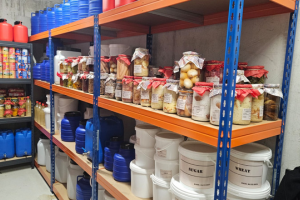 When planning a rock-bottom meal plan, it’s all about stocking up on cheap ingredients that can last. These are the staples that will help you get by without blowing your budget or worrying about food spoiling too quickly.
When planning a rock-bottom meal plan, it’s all about stocking up on cheap ingredients that can last. These are the staples that will help you get by without blowing your budget or worrying about food spoiling too quickly.
- Rice: Rice is cheap, versatile, and calorie-dense. A 20-pound bag can last for months if rationed properly. It also doesn’t require much fuel to cook—just boil until tender, which can be done even with minimal heat.
- Beans: Dried beans are inexpensive and high in protein. Yes, they take a while to cook, but soaking them overnight can reduce the cooking time and save on fuel.
- Oats: Not just for breakfast, oats can be used to make porridge, bread, or filler for other meals. They cook quickly and can be made with just boiling water.
- Pasta: Pasta is another filling staple that’s easy to cook and versatile. It can be paired with whatever sauces, spices, or canned goods you have on hand.
- Potatoes: Potatoes are affordable, filling, and can last for weeks if stored in a cool, dark place. They can be boiled, baked, or even cooked in the embers of a fire.
- Canned Goods: Canned vegetables, meat, and soups are lifesavers when fresh food isn’t an option. They’re already cooked, which means less energy is needed to heat them.
- Flour: Flour is essential for making bread, tortillas, or dumplings. If you have some yeast or baking powder, you can turn flour into something filling and satisfying with very little.
- Cooking Oil: A small amount of cooking oil goes a long way. It adds much-needed calories and flavor, and helps with cooking almost anything.
You can find a more comprehensive list in a guide that includes the only food you need to stockpile and it also contains a meal-by-meal rationing plan to make sure you are not only getting around 2,200 calories a day but also the vital protein, fat, and other nutrients that will keep you healthy in the long run.
Meal Plan Basics: Stretching What You Have
The goal with a rock bottom meal plan is to stretch every single ingredient. Waste is not an option, and each meal needs to work for you as hard as possible. Here’s a sample plan using the ingredients mentioned above, aimed at keeping your family fed with the least amount of resources.
Day 1
Breakfast: Oatmeal
- Cook oats in water and add a pinch of salt. If you have a sweetener or dried fruit, add it in to make it more palatable.
Lunch: Rice and Beans
- Cook a pot of rice and mix it with cooked beans. Add any spices you have available—even salt and pepper can make a big difference.
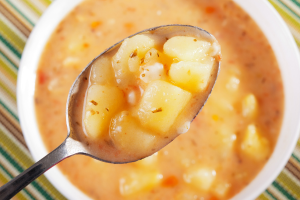 Dinner: Potato Soup
Dinner: Potato Soup
- Dice potatoes and cook in water until soft. Add any canned vegetables you have to bulk it up. If you’ve got a bouillon cube, throw it in for extra flavor.
Day 2
Breakfast: Flatbread
- Mix flour and water to create a dough, then cook in a hot pan until browned on both sides. If you have a bit of oil, use it to prevent sticking.
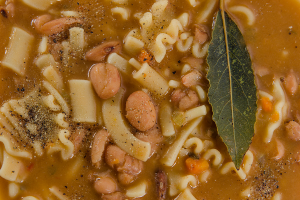 Lunch: Pasta with Beans
Lunch: Pasta with Beans
- Cook pasta and mix with leftover beans from Day 1. Add oil or spices to improve the flavor. Beans provide protein while pasta fills you up.
Dinner: Fried Rice
- Use leftover rice from Day 1. Fry it up with a bit of oil, add any leftover vegetables or canned meat. If you’ve got an egg, scramble it in for extra protein.
Day 3
Breakfast: Potato Cakes
- Mash leftover potatoes and mix with a bit of flour. Form into patties and fry them in a pan. Simple and filling.
Lunch: Bean Soup
- Use leftover beans and add water to make a simple soup. Add spices or bouillon if you have it, and any leftover vegetables for extra nutrition.
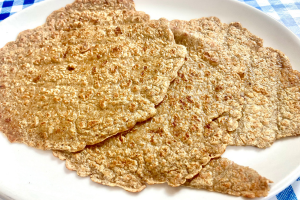
Related: Instant Foods You Need to Stockpile Before They Disappear
Dinner: Oatcakes
- Mix oats with a little flour and water, fry in a pan until golden. Serve with whatever topping you have—syrup, canned fruit, or just salt.
How to use everything in your pantry
If you don’t want to through out the window your hard-earned money, you really don’t want to waste any food. I found a lot of ingenious tips and tricks from this book that includes the Great Depression food that saved America, but also this simple to use techniques like these:
- Batch Cooking: Cook a large batch of beans or rice at the beginning of the week. Reheat portions as needed to save fuel and cooking time. Batch cooking allows you to spend less time and energy prepping meals every day.
- Reuse Cooking Water: Don’t throw away the water you used to cook beans or potatoes. It’s full of nutrients and can be used as a base for soups or to cook rice for added flavor.
- One-Pot Meals: Whenever possible, cook one-pot meals. They’re easier, require less cleanup, and help conserve cooking fuel.
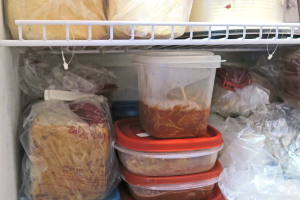 Use Leftovers Creatively: Get creative with leftovers. Leftover rice becomes fried rice, leftover beans turn into soup, and leftover potatoes can be mashed and fried. Reinventing leftovers keeps meals from getting boring while ensuring nothing goes to waste.
Use Leftovers Creatively: Get creative with leftovers. Leftover rice becomes fried rice, leftover beans turn into soup, and leftover potatoes can be mashed and fried. Reinventing leftovers keeps meals from getting boring while ensuring nothing goes to waste.- Cooking with Minimal Fuel: If fuel is limited, focus on foods that can be cooked with just boiling water or require little simmering. Soaking beans overnight reduces their cooking time, and rice can be parboiled in a small amount of water, then left to sit and steam with the lid on.
- Solar Cooking: If you have access to sunlight, consider using a makeshift solar cooker. A basic solar cooker can be made with aluminum foil and a cardboard box to slowly cook meals without using any fuel at all.
Emergency Substitutions
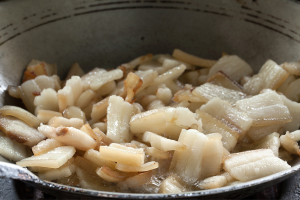
If you’re low on certain staples, here are some substitution tips to keep your meals on track:
- No Rice? Use pasta, oats, or potatoes instead. Each of these is filling and easy to cook.
- No Beans? Use lentils or split peas, which cook faster and still provide protein.
- No Cooking Oil? Render fat from any meat you have on hand or use canned butter. If you’re truly desperate, bacon grease can also work. Here is a great recipe if you want to make lard and tallow to use for cooking. It’s so good, my grandma used to eat it as is, on toast.
Scavenging and Bartering
It’s not just about what you have in your pantry. Hard times might mean scouring your environment for food or bartering with neighbors. Consider these methods:
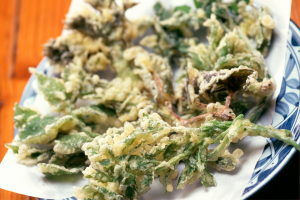 Wild Edibles: If you live near wooded areas, get familiar with local wild edibles like dandelions, plantains, and acorns. They can be foraged and added to meals to stretch your food supply. This is a good place to learn what you can forage even in winter.
Wild Edibles: If you live near wooded areas, get familiar with local wild edibles like dandelions, plantains, and acorns. They can be foraged and added to meals to stretch your food supply. This is a good place to learn what you can forage even in winter.- Bartering: In a crisis, bartering can become a valuable skill. If you have extra flour but need oil, find a neighbor who’s willing to trade. Building a small network can help everyone involved.
The Power of Planning Ahead
Surviving on a rock bottom meal plan is a test of resourcefulness and resilience. The key is to plan ahead while things are still relatively stable. Stock up on inexpensive, long-lasting staples like rice, beans, and flour, and practice making simple meals that use minimal resources. Get comfortable with batch cooking, using leftovers, and improvising based on what you have available.
No one knows when the next crisis will hit or how severe it will be. We’ve all seen how quickly things can go south, and food security is one of the first things to get shaken. It’s not about living in fear—it’s about being prepared, using every ounce of knowledge we have to protect our families when the chips are down. Having a rock bottom meal plan isn’t just about food; it’s about peace of mind and survival.
You may also like:
 4 Prepper Mistakes That You Should Actually Make
4 Prepper Mistakes That You Should Actually Make
Canning Amish Poor Man’s Steak (Video)
Read This Before Buying Survival Medicine

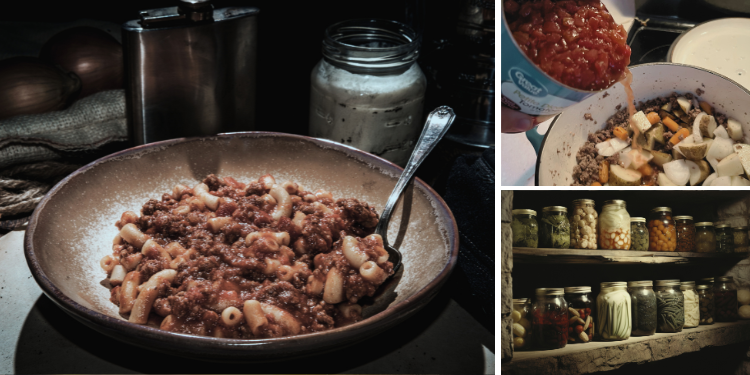







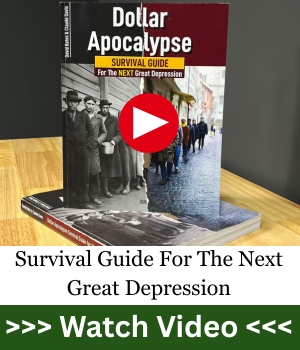



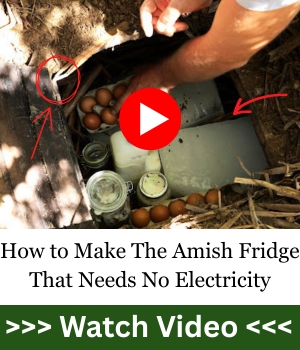








Last weeks article about cleaning up your water was what I thought should be page one in your folder, well this is page two. I have his eight items in my deep pantry. Actually, for oils I have lard and butter that was processed into ghee and I store it in the back of my freezer. Over the years I have added freeze dried foods, some off the shelf and some prepped in my own freeze drier. I have canned fruits and veggies and quite a bit of Spam, salmon, and tuna. There is enough other variety that I don’t feel we will get bored.
But, my main point like the authors is start with the basics, and I agree with his list.
Keep. It. Simple. Stupid.
I Freeze Dry also, doing runs on Fruits and Veggies. Next week are the dairy items (milk, yogurt, sour cream, etc) Remember proteins in all forms. it was a great basic list, remember to prep!!
Nowhere do preppers mention pressure cookers. Old fashioned kind you use on the stove. They can be used on any heat source. Great for dutch oven cooking, popcorn, but amazing fuel savers for beans , rice or almost any dish.
I thought the same. Pressure cookers typically take one-third the cooking time, so white rice needs 8 minutes processing time, brown rice 14 minutes, 12 works if you’re going toix the rice in something else and heating things through.
Old cookbooks can be a handy resource. I have one that came out before WWII, and another edition I have is a wartime edition, which talks about how to make your foods go farther and gives a 3-week menu. It also tells how to clarify fat after you’ve used it. Done right, fats can be reused many times.
While some might not consider it rock-bottom, having some herbs and spices on hand help, too. Most people have a sunny enough windowsill where they can have a few plants like basil, oregano, and rosemary. Any or all of those added to the flatbread mentioned in the article can give it a taste of focaccia bread.
Chives are easy to grow on pots, too, and can add lots of flavor.
If the shtf season lasts awhile, having at least a few herbs and spices can go a long way to fight food fatigue.
Curious as to how much to cut the waterfor rice in the parboil then let sit to slow cook on reminant heat scenario…??
Dome Living: Could you please give us al the names/titles of your pre-WWII and during WWII cookbooks? I would like to search for at least one of them!
Thank you!!
JESS
Jess, I believe your request for cookbooks was meant for Mbl, my oldest one is Better Homes & Gardens and was probably printed in the early 50s. It stayed in print for years and is very common.
Jess, the prewar one is called “The American Woman’s Cook Book, which I believe first came out in 1927 and 1934 as it mentions this volume (from 1938) has copyrighted info from those years. The wartine edition is called “The Victory Binding of the American Woman’s Cook Book Wartime Edition ” copyright 1943.
I have older versions of the Better Homes and Gardens New Cook Book, but the oldest I have of that one is from 1947. By that point in the US people wanted to put the war and its rationing behind them, so it does not have info on clarifying fats.
The Victory Binding of the American Woman’s Cook Book Wartime Edition is available for $103 in hardcover on Amazon, but is $14.99 in the Kindle edition.
A couple more cookbook recommendations – the Betty Crocker cookbook has been around for a long time, and the older ones are very good. if you can find a copy of The Settlement Cookbook – it’s also a good one. It has been reprinted, I got a copy in the 70’s, but I also have my mothers’ and grandmother’s copies. The older ones (maybe the newer ones too?) have such information as processing/butchering game animals (squirrels, rabbits, possums, etc.) for cooking, as well as many other old-fashioned basic recipes.
Forgot to mention above that I’ve been eyeing the Thermal Cooker that is Amazon’s Choice. Looks great to me and you barely need ANY fuel! Here’s the title so you can search for it!
7.5Q Thermal Cooker, Warmer in one,Save Energy Cooker (NVC-7020) By C&H
It is almost $90.00 and I am kind of broke right now, after buying so many homeopathic and allopathic medicines to combat the viruses and illnesses the Deep State wants to release on us this coming week (once Trump is inaugurated.). This will be my next purchase, though!!
i remember my grandma always put ground up satine crackers in a pound of hamburger to stretch it. you couldn’t tell it when eating it but it did make the hamburger go farther. the author said use bacon grease as a last resort, i can’t imagine my wifes green beans cooked in anything but bacon grease. she uses it a lot to cook stuff in. the pressure cooker was a good reminder too, i use ours from time to time.
Jess, that thermal cooker is like a haybox or fireless cooker.
The haybox was as it sounds, where you’d place your hot pot in a box of hay, cover the pot, and let it cook several hours. The hay provided the insulation to keep the hot pot hot.
The wireless cooker was popular in the 1920s. You had pots in which you placed your foods, heated everything up including the stones for the fireless cooker. Place a heated stone (made of iron or another metal) in the bottom of the cooker, then the pot with tight fitting lid, then another heated stone on top, and finally, the cover. Fancier version of the haybox, but same concept.
If you have a Dutch oven, you can try heating that up with your food, then placing it in a Styrofoam cooler with insulation around your Dutch oven. Packing peanuts would work well.
If you go on a website and find pressure cookers are not available for six months? Don’t be surprised. The one I bought in 2020. It is American Aluminum out of Wisconsin. It is NOT electric. There was an option to be notified if one came available for any reason. I did and it was just a few days I was notified and asked if I wanted it. I did. All this stuff about EMP and grid failure came crashing in on me again when hurricane Beryl hit and we were not warned. Electricity was out immediately. 10 counties. Think twice about buying anything electric. Think, how can I do this without power and go from there. All you power tools are useless. Go to flea markets and get old crank drills, hand saws, grass whips. Think about no power and…
Get a propane cook surface. Camp chef makes a good two burner stove that we use for canning and for when we lose power, (live rural). Add in a number of 20lb tanks and you’re set for awhile. I also have a propane powered genset for my well/pumphouse. Propane does not go bad like liquid fuels and will store indefinitely. I use 20lb tanks because they are easier for me to handle.
This week’s YouTube episode of A Taste of History with Max Miller, showcased a recipe for a simple one-pot stew with tulip bulbs as a main ingredient. It’s a version of a traditional stew which the Dutch ate during WW2 to keep from starving. Max Miller has had numerous shows on foods prepared during various times in history around the world and the ones that focus on hard times, helps one understand what it really takes sometimes to survive.
Great insights! As Vaividya Events, we found this rock bottom meal plan very practical and informative. A helpful guide for anyone looking to stretch essentials during tough times. Thanks for sharing!